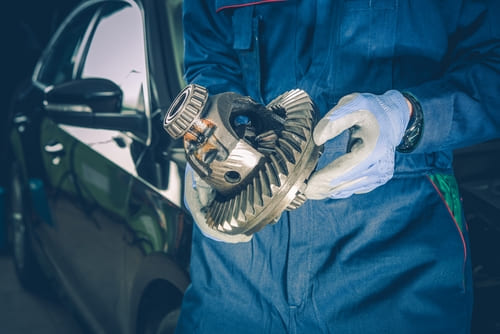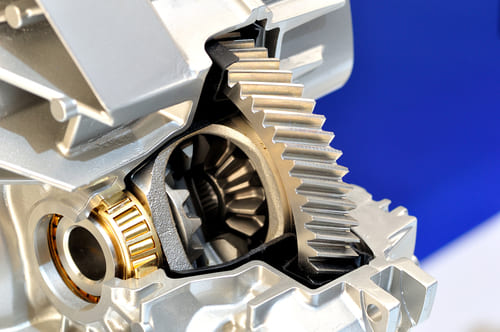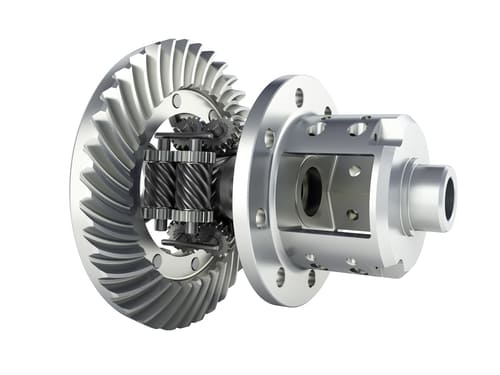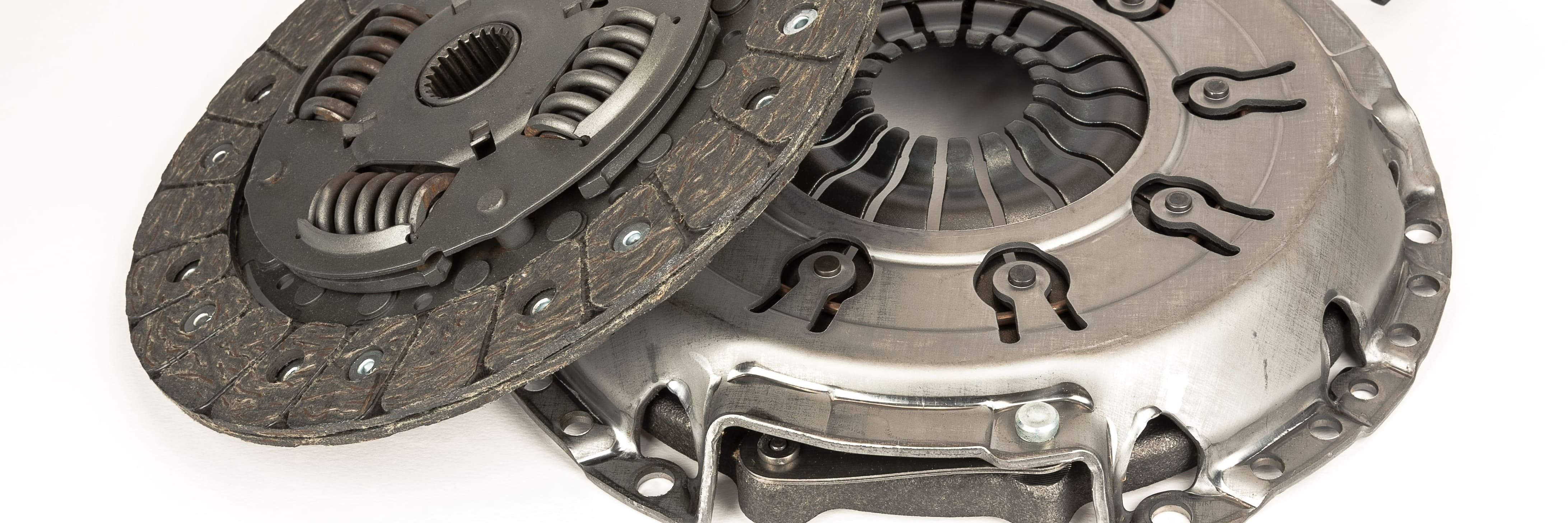What is a rear differential?
The differential essentially ensures that the wheels on an axle receive the right amount of engine power, according to the vehicle’s direction of travel and wheel resistance. When turning a car, the wheels on the outer side of the turn need to rotate faster and travel a longer distance than those inside of the turn to ensure stability. If all four wheels were to spin at exactly the same speed, turning would become far more difficult, traction would be reduced, and your tyres would pay the price for it.
In a rear wheel drive, the engine transmits power via the car’s driveshaft rear and front to the rear axle differential which distributes the power between the two rear wheels, while the front wheels steer. With front-wheel drives, it is the other way around; the differential is connected to the front axle and the rear wheels roll along. A four-wheel drive uses both front and rear differential parts, applying equal power to both axles, whereas an all-wheel drive employs three differentials that allow it to transmit power to all four wheels independently.

How often do you need to change the differential fluid?
The components are designed to last for many years as long as they are properly maintained. However, if the differential isn’t properly lubricated, it isn’t going to get you very far. Differential fluid is a gear oil that forms a protective barrier on the gears, rear or front wheel bearings and shafts, reducing metal-on-metal contact and thermal damage. It is similar to manual transmission fluid and operates in the same way, cooling and protecting the metal gears against corrosion.Over time, the oil starts to break down and lose its protective properties. To prevent wear and damage, car manufacturers generally recommend changing the fluid every 30,000 to 50,000 miles, although this interval may be longer for certain products and vehicles.

Symptoms of rear differential problems
In addition to a lack of lubrication, there are a number of other causes of differential failure, such as driving in extreme conditions and on rough terrain, bad driving habits, excessive wheel spin, and collisions. When the rear differential goes bad, you will likely notice at least one of the following symptoms:
- Excessive & uneven tyre wear
When the differential gears aren’t working as they should, the tyres may be forced to rotate at the wrong speeds, which can cause the inside of the tyre to wear down quicker than the outside of the tyre as well as sidewall damage. Of course, there are other factors to consider, including wheel alignment and tyre pressure.
- A leaking rear differential
Leaks can occur if the housing, seal rings or gasket gets damaged. Keep a lookout for any fluid leaking from the back of the vehicle.
- A loss of traction & poor handling
You’ll probably notice that the vehicle’s handling is less precise, particularly when making turns. The tyres may skid or slip due to a malfunctioning differential. The car may vibrate or shake during acceleration as a result of worn U-joints.
- A noisy rear differential
This is perhaps the most obvious sign of differential failure. For example, you may hear a clunking or rumbling sound at speeds above 15 mph if the gears or bearing are worn. A whining or grinding noise could indicate that there is a lack of lubrication in the differential.
Rear differential noise vs wheel bearing noise
Although the noises are similar, unlike a wheel bearing, the noise will get louder with changes in both wheel speed and load. The noise usually doesn’t change when making turns.
Replacing the differential
Replacement costs vary depending on the specific vehicle model and its year of manufacture. For example, the price for a BMW differential replacement or rebuild typically ranges between £350 and £1000.
TOP products on the subject:














































